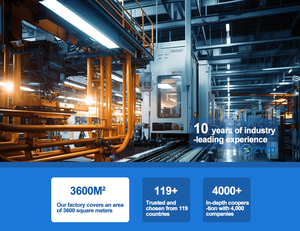
All categories
Featured selections
Trade Assurance
Buyer Central
Help Center
Get the app
Become a supplier

(1122 products available)







































Hydro mechanical systems include mechanical systems that use water to generate, control, and transmit power. These systems are applied in various contexts, such as in water treatment plants, waterways, irrigation systems, and drainage systems. Hydro mechanical systems combine hydraulic and mechanical principles and components to achieve their goals.
Typically, hydro mechanical systems have two main types:
Hydraulic systems
Hydraulic systems are part of hydro mechanical systems that employ the use of water or other incompressible fluids to transmit power. The system consists of a pump that generates flow and pressure, a network of hoses and pipes that transport the water along with valves and fittings, and hydraulic cylinders and tools that convert the hydraulic energy into mechanical work. The key benefit of hydraulic systems is the ability to transmit large amounts of power over long distances while allowing for precise control of the mechanical movement.
Hydro mechanical systems
Hydro mechanical systems are a subset of hydraulic systems that use water as the primary fluid to transmit power. Hydro mechanical systems are applied in areas where the control and transmission of power are needed, such as in irrigation systems where water is distributed to various plants and agricultural fields, and in drainage systems where excess water is managed.
Other types of hydro-mechanical systems include:
Water treatment plants
Water treatment plants use hydro-mechanical systems to manage water flow and treatment processes. Hydro-mechanical systems control water treatment processes such as sedimentation, filtration, and distribution, ensuring safe and clean water delivery to consumers.
Irrigation systems
Hydro-mechanical systems in irrigation systems control water flow and distribution, ensuring efficient water delivery to crops and agricultural fields. The hydro-mechanical systems used in irrigation systems enhance crop productivity while conserving water resources.
Hydraulic engineering
Hydro-mechanical systems are employed in various hydraulic engineering applications, such as dam construction, flood management, and navigation. The hydraulic and mechanical components of these systems help manage water flow, control water levels, and ensure safe transportation, contributing to sustainable and efficient water resource management.
Hydro-mechanical systems are complex systems that rely on the precise interaction of mechanical components and fluid (usually water) mechanics to function. Here are some general specifications for hydro-mechanical systems:
Flow capacity and requirements:
The flow rate is the amount of fluid that passes through the system per unit of time (e.g., liters per second or cubic meters per hour). The flow capacity must be sufficient to meet the system's operational requirements, such as transporting water, generating power, or irrigation.
Pressure requirements:
Hydraulic systems operate under different pressure levels, with some requiring low pressure and others high pressure. The pressure is measured in units such as pascals or bars. The pressure level should be sufficient to overcome resistance in the system, including friction, elevation changes, and other factors affecting fluid flow.
Temperature range:
Hydro-mechanical systems may operate at various temperatures depending on environmental conditions and the fluid transported. Some systems require heated water, while others operate with cold water or at ambient temperatures.
Material selection:
The materials used in hydro-mechanical systems must be compatible with the transported fluid and the operating environment. For example, materials such as steel, ductile iron, aluminum, and various types of plastics are commonly used in hydraulic systems. The selected materials must be resistant to corrosion, erosion, and chemical reactions with the transported fluid.
System components:
Hydro-mechanical systems consist of several key components, including pipelines, pumps, valves, reservoirs, channels, and hydraulic structures. The size, capacity, and specifications of these components must be coordinated to ensure the system's efficient operation and coordination.
Operational reliability and maintenance:
Hydro-mechanical systems' reliability and maintainability are critical to ensuring uninterrupted operation and minimizing downtime. Reliability involves the reliability of key components (e.g., pumps, valves) and the system's overall performance. Maintainability includes aspects such as easy access to components, maintenance requirements, and the availability of spare parts and tools.
Environmental impact:
Hydro-mechanical systems can impact the environment, including water consumption, habitat destruction, and pollution. Environmental specifications and requirements should be considered to minimize the adverse effects of the system on the environment.
Hydraulic control and monitoring:
Some hydro-mechanical systems require hydraulic control and monitoring to ensure the system's operational parameters remain within the desired range. This includes controlling flow rates, pressure levels, and water quality monitoring. Control and monitoring systems may include sensors, controllers, data acquisition systems, and automated control devices.
Maintenance is essential for the reliability and efficiency of hydro-mechanical systems. Here are some general maintenance requirements:
Regular inspection:
Regular inspection is essential for hydro-mechanical systems' reliability and performance. Key components and system parts include pipelines, pumps, valves, reservoirs, channels, and hydraulic structures. Regular inspections can identify problems such as leaks, blockages, wear, and damage in a timely manner. Visual inspections, measuring the operating parameters of components (e.g., flow, pressure), and using inspection tools (e.g., endoscopes, ultrasonic thickness gauges) are commonly used inspection methods.
Cleaning:
Cleaning is vital to maintaining the performance and efficiency of hydro-mechanical systems. Key components and system parts include pipelines, pumps, valves, reservoirs, channels, and hydraulic structures. Cleaning can remove problems such as deposits, blockages, and contamination, ensuring smooth fluid flow and the normal operation of system components. Common cleaning methods include manual cleaning, chemical cleaning (using cleaning agents or additives), hydraulic flushing (using high flow water), and pneumatic cleaning (using compressed air).
Wear and tear monitoring:
Hydro-mechanical systems' components (e.g., pumps, valves) are subject to wear and tear over time, affecting the system's performance and efficiency. Therefore, it is essential to monitor the wear and tear of key components. This can be achieved through regular inspections, measuring operating parameters, and using monitoring and diagnostic tools (e.g., vibration sensors, temperature sensors).
Leak detection and repair:
Leakage can occur in pipelines, valves, joints, and other components of hydro-mechanical systems, leading to fluid loss, pressure drop, and environmental pollution. Therefore, it is essential to monitor the system for leaks regularly. This can be achieved through regular inspections, measuring operating parameters (e.g., pressure, flow), and using leak detection technologies (e.g., acoustic sensors, pressure drop detection). Once a leak is detected, it should be repaired promptly. This may involve replacing damaged components, tightening joints, or using sealants.
System calibration:
System parameters (e.g., flow rate, pressure, water quality) should be regularly monitored and calibrated to ensure they meet operational requirements. This includes using calibrated measuring instruments and adjusting relevant components and control systems.
Hydraulic control and monitoring:
Some hydro-mechanical systems require hydraulic control and monitoring to ensure the system's operational parameters remain within the desired range. This includes controlling flow rates, pressure levels, and water quality monitoring. Control and monitoring systems may include sensors, controllers, data acquisition systems, and automated control devices.
When buying hydro mechanical systems, one needs to consider several factors. Below are some of them.
Functionality
What does the hydro mechanical system need to accomplish? Knowing the work needed to be done by the system will help select the right system. For instance, will it be needed to filter water or control its flow?
Capacity
Consider the capacity and size of the hydro mechanical system. It should be able to handle the required amount of water or flow rate. If it is a hydro mechanical filter, it should be able to filter water at the desired rate.
Quality
Look for a hydro mechanical system made from durable materials. It should resist corrosion and wear because of its exposure to water. The quality should ensure reliability and a long life for the system.
Maintenance
Consider how easy it will be to maintain the hydro mechanical system. Choose designs that have low maintenance requirements. Regular maintenance routines that are easy to perform will help keep the system working well.
Cost
Budget is an important factor when buying hydro mechanical systems. Find one that gives the best value for money. The system should meet the required needs and be within the budget.
Installation
Consider how easy installing the hydro mechanical system will be. Get one with an installation process that is simple and fast. Also, consider if extra parts or tools will be needed to install the system.
Compatibility
Consider how compatible the hydro mechanical system will be with other existing systems or equipment. It should be able to work well with other systems without major adjustments or problems.
Environmental Impact
Consider the environmental impact of the hydro mechanical system. Choose one that uses less energy, produces little noise, and has a low impact on the environment.
Supplier Reputation
Research the reputation of the supplier or manufacturer of the hydro mechanical system. Look for suppliers known for quality products, good customer service, and reliable support.
Identify the components
Recognize the parts of the vehicle's hydro-mechanical system that require attention. This could involve the hydraulic system, mechanical linkages, or other integrated components. Understanding the system layout will help in the subsequent steps.
Gather necessary tools and materials
Collect the required tools for the job, such as wrenches, pliers, screwdrivers, hydraulic fluid, and any replacement parts. Ensure that the tools are appropriate for the specific hydro-mechanical system being worked on.
Consult the service manual
Refer to the vehicle's service manual for detailed instructions on disassembling and reassembling the specific hydro-mechanical system. The manual will provide guidelines for the disassembly process, torque specifications, and other essential information to ensure a successful DIY replacement.
Disassemble the system
Follow the service manual instructions to disassemble the hydro-mechanical system carefully. Take notes and pictures during disassembly to aid in reassembly. Keep track of the order and location of components to avoid confusion later.
Clean and inspect
As the system is disassembled, clean all components and inspect them for wear, damage, or leaks. Replace worn-out or faulty parts to ensure the system operates optimally when reassembled.
Assemble the system
Install the new parts carefully and follow the torque specifications in the service manual. Reassemble the hydro-mechanical system in the reverse order of disassembly, ensuring all components are adequately aligned and tightened to prevent leaks or malfunctions.
Fill hydraulic fluid
If the system involves hydraulic fluid, refill it to the recommended level after reassembly. Bleed the system to remove any air bubbles, ensuring optimal performance and preventing damage to components due to inadequate fluid pressure.
Test the system
Before reassembling the vehicle, test the hydro-mechanical system to ensure it functions correctly. Perform tests as instructed in the service manual to verify that all components work together as expected.
Reassemble the vehicle
Once satisfied with the hydro-mechanical system's performance, reassemble the vehicle. Follow the service manual for reassembly instructions, ensuring all exterior and interior components are correctly installed.
Take a test drive
After completing the DIY replacement of the hydro-mechanical system, take the vehicle for a test drive. Pay attention to how the system performs during the test drive, and be alert for any unusual noises, vibrations, or warning lights on the dashboard.
Q1: What are the common problems of hydraulic mechanical systems?
A1: The common issues of hydraulic mechanical systems include leaks, noise and erratic operation. Leak is where there is a liquid leak from the pipes or components of the system, which may be due to wear or damage to the components. The noise is where there is noise coming from the hydraulic mechanical system, which may be due to air leakage or low liquid level in the system. Erratic operation is where the system does not operate as required, and this may be due to blockage or failure of the control components.
Q2: How can these problems be solved?
A2: These problems can be solved by regular maintenance, inspection and timely repair of damaged components. In addition, the hydraulic mechanical system should be installed correctly to ensure that it operates as required without interference.
Q3: What is the future trend of hydraulic mechanical systems?
A3: The future trend of hydraulic mechanical systems will focus on energy efficiency, environmental friendliness and the use of smart technology. Energy efficient systems will reduce energy consumption, while environmentally friendly systems will use biodegradable liquids and materials with low environmental impact. In addition, smart technology, such as the Internet of Things (IoT), will enable real-time monitoring and automation of hydraulic mechanical systems, thereby improving efficiency and reliability.